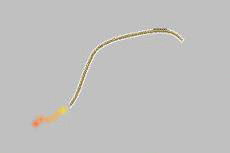Burning Rope
You are given two ropes and a lighter. You know that each rope burns completely in an hour. However, you do not know the rate at which the ropes burn (the ropes burn at different rates).

Example: Most of the rope can burn in a second and the rest can burn in 59 minutes and 59 seconds. What is the minimum amount of time that you can measure?
Type the answer in minutes
The answer is 15.
This section requires Javascript.
You are seeing this because something didn't load right. We suggest you, (a) try
refreshing the page, (b) enabling javascript if it is disabled on your browser and,
finally, (c)
loading the
non-javascript version of this page
. We're sorry about the hassle.
3 solutions
How do you know this is the minimum?
You should have given the unit of time too (like:enter the time in minutes).
Won't they both burn completely in an hour? I think this problem makes no sense without constant burning rates.
By that logic I can fold the rope twice and burn it from 4 ends. No need for a second rope to measure 15 min. Cut it in 10 pieces and burn them all together. 6 minutes.
Log in to reply
This won't work as the ropes do not have constant burning rates.
I think it should be specified the unit of measurement for time.
Arguable you can do this with 1 rope, assuming you are infinitely fast at lighting rope.
Example: Light a rope at both ends and somewhere in the middle, the flame in the middle will burn in both directions. When it connects with another flame light the remaining rope somewhere in the middle and repeat until the whole rope is burned. (Takes 15 mins).
This method can be extended indefinitely: light the rope at 1 or 2 ends, and n times in the centre. When 2 flames meet light another flame. This will burn out in 2 n + 1 6 0 or 2 n + 2 6 0 minutes.
Lighting another rope at 1 or 2 ends at the same time, and when the first rope burns out, lighting m flames (and possibly changing the number of lit ends) allows you to measure even more times: 2 m + ( 1 o r 2 ) 6 0 − ( 1 o r 2 ) ∗ 2 n + ( 1 o r 2 ) 6 0 .
Not allowing this repetition of burning limits n = m = 0. So we can achieve 1 o r 2 6 0 − ( 1 o r 2 ) ∗ 1 o r 2 6 0 with minimum at 15. Allowing a max of n , m ≤ N . We can achieve 2 N + ( 2 ) 6 0 − ( 2 ) ∗ 3 6 0 or N + 1 1 0
Fold one rope in half and burn both ends simultaneously, at the same time burn one end of the other rope. When the first rope burns completely, light the second rope from the unburnt side. The second rope will burn for another 15 minutes.